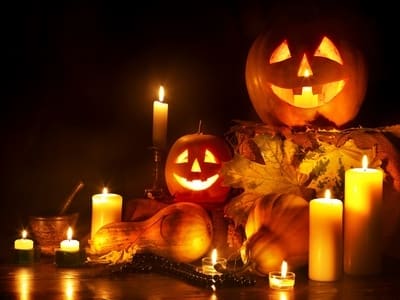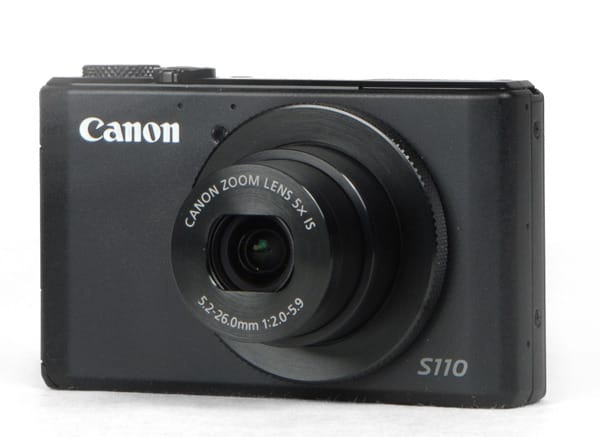8 Tips for Great Halloween Photos
Low-light photography is tricky. Work with your camera to find the best results.
Products are chosen independently by our editors. Purchases made through our links may earn us a commission.

Outlandish outfits make for great photos, but most Halloween festivities take place in the dark—costume parties, trick-or-treating, haunted houses and hayrides—so you'll need to brush up on your technique a bit if you want the best results. Whether the festivities begin tonight, or you're waiting for the real All Hallows Eve, take a moment to go over these low-light photography tips.
Tips for Beginners
• Shoot near streetlights, porch lights, lamps, and candles. It sounds obvious, but don't forget that you need light to make a picture. Improvise with what's available.
• Don't be afraid to use your flash. Sometimes the available lighting is too ambient to get a good shot. There's no photographic purity law punishing the use of flash. If your shots look as white and washed out as ghosts, take a few steps backward, or hold a tissue right in front of the flash, and try again.
• Keep the camera steady. Your camera's image stabilization only does so much. Rest the camera on a bench, railing, branch, or the trunk of a car when you shoot—anything relatively flat and stationary will help. Failing that, stabilize yourself by leaning against a streetlight, tree, or car.
• Don't zoom. As you zoom, you increase the chances of a blurry photo. Each little twitch and shake is amplified when you use a longer focal length, and most lenses let in less light as they zoom.
Tips for Hands-on Shooters
• Crank the ISO. Higher ISO settings make your camera more sensitive to light, which means you can use a quicker shutter speed, which means you'll have fewer blurry photos. If your ISO setting is too high, shots can look grainy or sloppy. As a very general rule of thumb, ISO 1600 is a safe setting to use for most current cameras, especially if you'll just be sharing shots on Facebook. Your camera's mileage may vary, so check out the noise section of our in-depth reviews for more info. Almost all cameras allow ISO adjustments.
• Shoot at the widest aperture. Wider apertures (lower f stops) let more light through the lens and into the camera, which (like higher ISOs) mean you'll be able to use a faster shutter speed, which means you'll have fewer blurry photos. As we mentioned above, aperture almost always shrinks when you zoom, so your best bet is to just zoom all the way out when you shoot in low light. Many point-and-shoots do not offer aperture control, so you may not be able to tinker with this feature. System cameras always have aperture control.
• Keep the shutter at 1/30s or faster. You should be able to get a decently crisp shot with this shutter speed—especially if your camera has stabilization and you're zoomed all the way out. Faster speeds increase your chances of getting very sharp photos. Like aperture, many point-and-shoots won't let you control shutter speeds, but system cameras do.
• Shoot in RAW. Yes the files are huge, and yes you need to run the shots through some extra software before you can share them. But it gives you more control over your editing, and even automated RAW conversion presets generally result in cleaner shots than out-of-camera JPEG files. Few point-and-shoots can capture RAW photos, but again, all system cameras offer the option.
Need to Buy a Camera?
Low-light photography demands a lot from a camera, and many point-and-shoots just aren't up to the task. Cheap compacts won't get the job done—you're better off saving your money, and using the camera you already have, even if it's just your phone's camera.

If you can step up to about $450, you're in business. The Canon S110 offers the most bang for the buck for low-light photography, with a slightly oversized sensor and bright f/2.0 lens, for cleaner, crisper low-light photos than lower-end compacts. The Sony RX100 is even better, with a larger sensor and brighter lens than the S110, though it's $650. In fact, just about any high-end point-and-shoot camera will improve your low light photos.
If you own an interchangeable-lens system camera (DSLR or mirrorless), the lens is more important than the body. Lenses can get really, really expensive, but most formats have a fixed focal-length lens with a bright aperture for $300 or less. If you're shooting with the kit zoom lens that came with your camera, you could definitely do better. The possibilities are nearly limitless, but if we had to pick one combo that offers great value for low-light shooting, we'd choose the Nikon D5100 (body-only) with the Nikon 50mm f/1.8 lens. Total at Amazon.com: $620. Now that's a happy Halloween.
